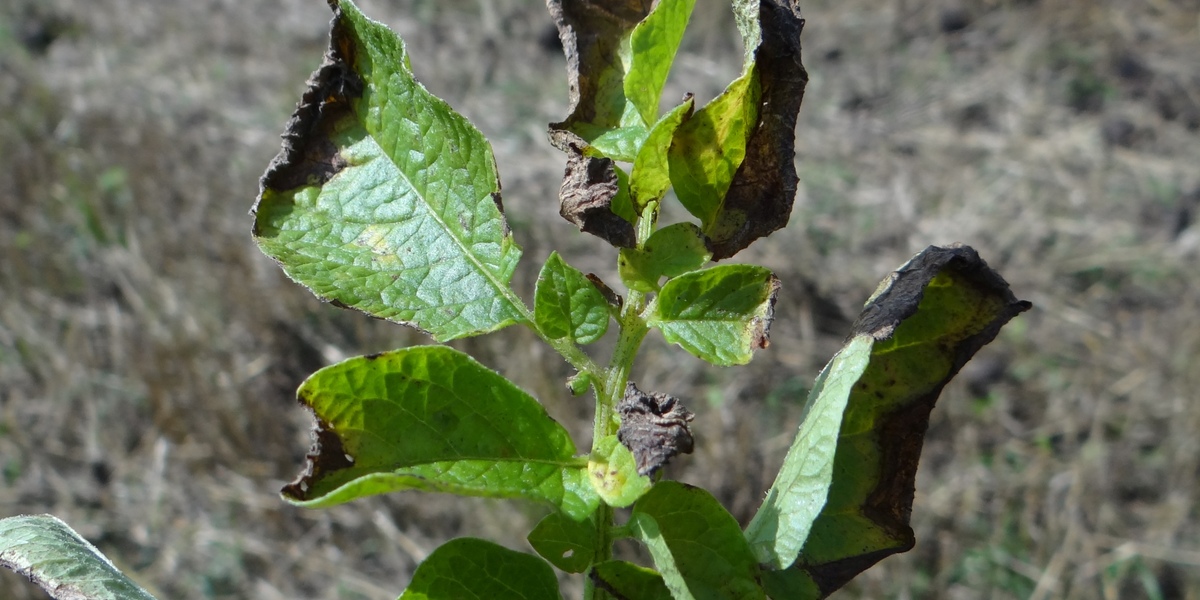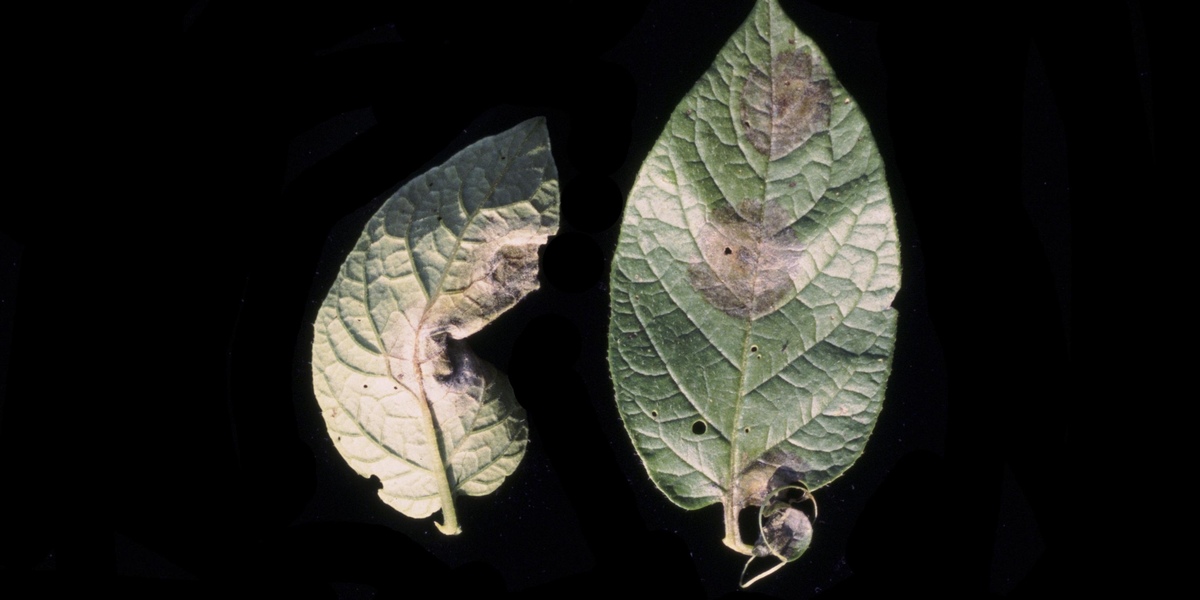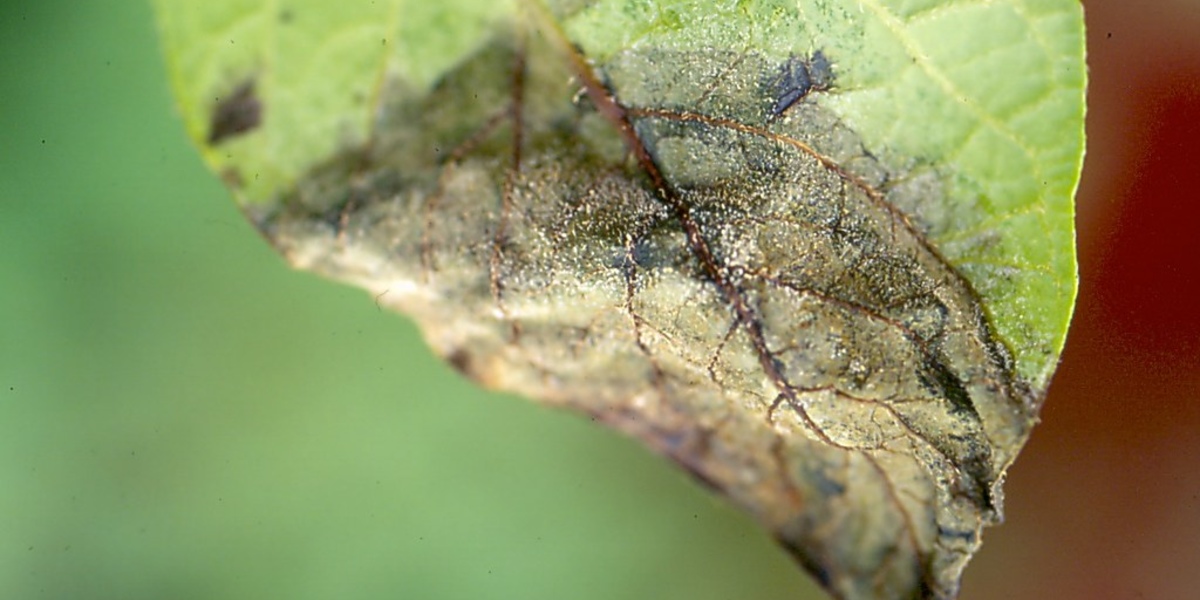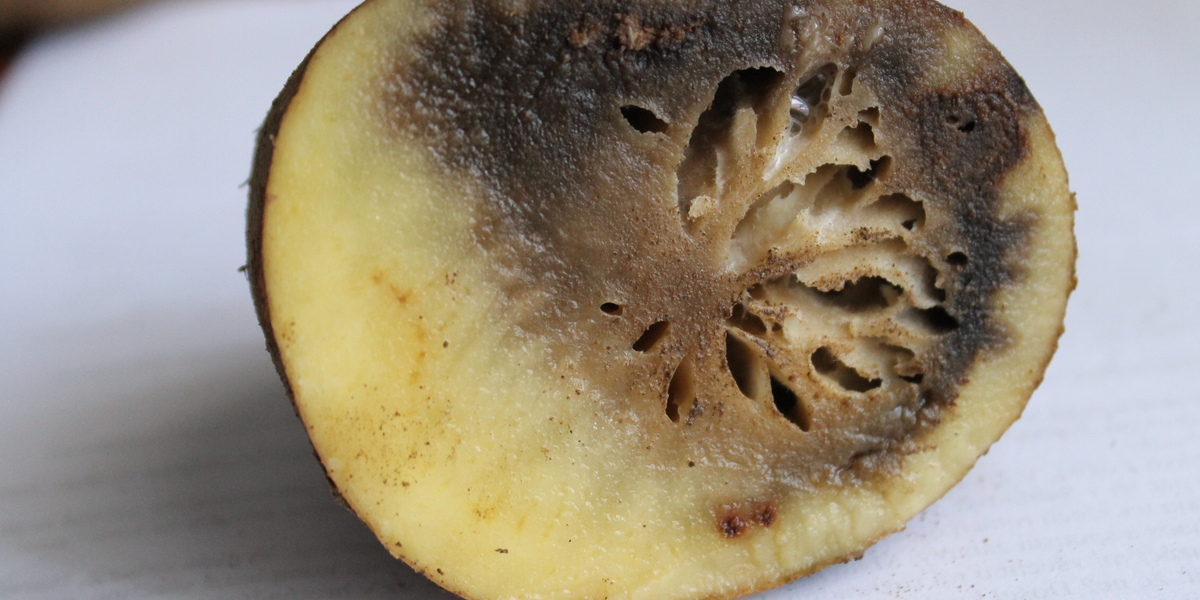Phytophthora is one of the most popular diseases that spread on plants’ roots, causing rot. Similar to honey fungus, this illness is behind the stem and roots decay. Although you can expect to see phytophthora on the roots of shrubs and trees, the house plants suffer from disease as well. It has numerous types with similar symptoms but different origins. Phytophthora rot affects bedding plants, herbaceous perennials, bulbs, and pot plants in no time.
General Information About Phytophthora
A disease that leads to the root and stems rotting spreads by the fungus-like microorganisms. Phytophthora was known from ancient times, ruining harvests. Its name literally means “plant destroyer” in Greek. It does not have any specific timing for the action, and your plant may be under threat at any time of the year. The worst is that you wouldn’t be able to see these organisms without specific equipment.
You may not know that, but phytophthora root rot starts inside the soil. These microorganisms can stay in the soil for years until you plant some greenery there. Once phytophthora recognizes a new organism, it quickly acts. The disease spreads onto the roots first.

The best soil for phytophthora spreading is the waterlogged one. The more water, the better for the fungi. Since the first symptoms of the disease are similar to simple overwatering, it is easy to confuse one problem with another. There are different types of phytophthora. Some of them are spread by the spores flying in the air, acting as foliar pathogens.
Phytophthora Species
There are over 80 different species of phytophthora species you can find around the world. Most of them are pathogens on plants. You don’t need to learn the full classification since you probably will deal with only one or maximum of two types, based on the plant and your climate zone. Here are the most frequently met species:
- Phytophthora capsici is the one that usually affects the cucumbers family. You don’t have to worry about your house plants if you don’t grow the squash or cucumbers in your window. You will quickly notice the symptoms since the rot will be visible on the stems and fruit itself;
- Phytophthora cactorum can be also called phytophthora rhododendron, since it mainly attacks specific flowers. Apart from that the disease can do the damage to azaleas. Hardwood trees may be affected by the bleeding canker caused by Phytophthora;
- Phytophthora fragariae is also known as phytophthora strawberry rot. This pathogen causes Lanarkshire disease also known as red stele. The fruits get bitter, the leaves are wilting, and flowering is significantly reduced. The same disease can be observed in raspberries;
- Phytophthora cinnamomi affects azaleas, rhododendron, juniper, hemlock, dogwood, arborvitae, and forsythia. It is widespread among wood trees too. This specie causes the so-called ink disease;
- Phytophthora infestant is the pathogen that destroys potatoes. It is known as phytophthora blight of potato and was the reason for the Great Famine of Ireland. It destroyed the harvest;
- Phytophthora lateralis is known for its effect on cedar trees. You may not meet it in your garden unless you have cedar;
- Phytophthora nicotianae is also known as the black shank. Its main target is onions, eggplant, tomatoes, and papaya. Leaves turn grey and roots quickly become necrotic;
- Phytophthora ramorum affects over 60 different plants and 100 host species. This is an oomycete pathogen of plants that is also called sudden oak death. You may have heard about its effect on the entire population of oaks in Oregon and California;
- Phytophthora cambivora is a pathogen that affects mainly chestnut trees. It also decays the rots of beech and a wide range of ornamental shrubs.
Symptoms of Phytophthora
This plant disease starts within the soil, so it is hard to notice until it spreads further. You may not even suspect that the old soil you plan to plant the new flower is already unhealthy. Infected by micro pathogens, the soil does not change its shape or color. Once you plant your greenery inside, the phytophthora comes to life and attacks the root. While there is phytophthora root rot fungicide that may help, it is highly important not to miss the symptoms.

To find the disease, you have to observe the plant carefully. It is the best and, for now, the only way to indicate the problem unless you have enough time and knowledge to check the soil. You may also need to examine the parts of the plant that are in the soil. The ways to check symptoms:
- Belowground symptoms are quite visible and understandable. You will see the rotting roots, dark and decaying. The tips of roots will be damaged the most. The root crown may stay unaffected for some time. Microorganisms are starting to feed on the roots of the plant after they are killed by the pathogen. The procedure looks the same in almost all cases. The roots are firm at the beginning, so if you have suspicions about their state, you have to take a sharp pocket knife and expose the vascular cambium on the large root. The area will be discolored, dull, or even dried out. Normally cambium has a red or brown color;
- Aboveground. These symptoms are not really diagnostic and must go in the complex. Meanwhile, you will notice phytophthora dieback signs above the ground in the first place. Yet, there are too many diseases that have similar symptoms. Anything that is related to overwatering can be mistakenly accepted as phytophthora pathogen. You can mistake the root rot for leaf necrosis or chlorosis. Apart from that, some plants do not even show the aboveground signs until the very late summer. Once the symptoms are there, it means that the root is gone and decayed.
Rotting starts below the surface and spreads up to the plant. Yet there are a few minor exceptions you have to keep in mind:
- Apple transmission looks different. The cambium is mainly discolored by the root crown, while collar rot is above the graft union;
- Dogwood has the cankers building above or near the surface;
- True fir reveals the narrowing of the stem apart from the root decay;
- Strawberry loses its natural color. The root is turning red from its usual pale color.
Symptoms of this pathogen in some rare cases can be shown only above the ground. Such cases are unique and can be easily recognized. They were noticed on potatoes and tomatoes. Both of these veggies have problems with leaf curling and stem blotches. If you check the leaf from the other side, you will notice necrotic tissue. Phytophthora peony and rhododendrons are recognized by small black spots on the leaves. Flowering pear has a black canker above the soil.
You may see the so-called leaf blights on pieris, camellia, huckleberry, and viburnum. The sudden oak death pathogen on trees reveals the “bleeding” cankers. The trunk has visible damage as well. To take disease under control, you have to identify it in the first place. Pay attention to the next symptoms:
- Dieback of the leaf. The tip, branch, or twig dies once the disease spreads on the stem;
- Blight. The leaf changes its color from green to light brown. It is colored in the spots of different shapes with the yellow haloes around;
- Decline. The plant stops growing. The canopy on the tree becomes thin;
- Death. The whole flower or tree dies in the most severe cases;
- Canker. You will find it on the inner part of the tree’s bark. To see it, you have to cut the bark. The liquid that will appear will be dark, reminding of blood;
- Rot. Check the roots for the rotting process. Sometimes you may notice it on the stem. It means that the pathogen has already climbed up above the surface;
- Wilting. The foliage is getting flaccid since the plant can’t take the water properly.
House Plants Affected by Phytophthora
House plants can be affected by phytophthora as well. Once the plant gets sick, you will notice the signs like the roots becoming soft, dark, and mushy. They become wilt. If the disease continues to spread, the stem turns brown and later black. It becomes extremely fragile and mushy. The leaves turn yellow and dropdown.

The species that are most vulnerable to Phytophthora:
- Rhodedndron;
- Sorbus;
- Rubus idaeus;
- Rose;
- Viburnum;
- Lavandula;
- Malus;
- Acer;
- Aucuba;
- Ceanothus;
- Buxus.
Treatment
Once you learn the symptoms, you can find out more about the treatment. Although some gardeners believe that there is no cure for the disease, modern science can do miracles. Before you begin to treat the ill plant, you have to take care of healthy species so they would not get affected as well. Pay attention to the fact that some pathogens can spread the molecules by air, while others infect the soil like fungi.
Natural control:
- Change the soil to the healthy one and improve the drainage system. It will help to cut the risks;
- If a disease has spread on the stem of the plant, you have to destroy it and change the soil there. It is better to plant another type of greenery in its place;
- Make sure the water is enough in the plant.
Chemical:
- You can use a wide range of preventive measures against the pathogen, including the fungicide fosetyl-al;
- Apply it as the spray near the surface so it could quickly soak inside and get absorbed by the roots;
- You may need to watch the damaged plant. If nothing helps, you have to use fungicide one more time.
There is a major difference between your approaches based on the plant that is affected. I do recommend getting rid of the ill plant if you grow it outside, as disease may spread and ruin the whole harvest. You may lose tomatoes in no time, and there is no point to keep the infected plant near the healthy ones, since the pathogen can spread from one root system to another, under the ground. You can’t take the risk of trying to save one plant.
Meanwhile, if you have the plant in the pot, affected by the disease, there is another way to treat it. You can try to save the plant if the root is not rotten completely. I believe you may start with changing the soil and proper drainage. Don’t forget about reliable fungicide. Read the comments from other customers before you buy it. I recommend making sure that other plants are standing far from the infected ones. Don’t forget about the sanitation of other flowers, even healthy ones. Check out them for the symptoms and make sure that they don’t require treatment.
The Importance of Quick Phytophthora Identification
The quicker you identify this disease the more you can do for your plants. You can prevent pathogens’ spreading and even save the plant. Based on the type of the phytophthora and the type of the plant that was infected, you can find the most beneficial way to treat the disease. Phytophthora looks similar to many other diseases caused by fungi and even viruses. The root is rotting and leaves are turning dark – can be symptoms of root rotting numerous diseases, browning of leaves, or leaf chlorosis known as yellowing.

Pay attention to all the symptoms. If you lack the knowledge after reading this article, go to a professional and show the plant to them. The symptoms must be checked both above the ground and below it. Don’t rush with the treatment until you are sure about the disease. There are numerous apps that may help you to recognize the disease. You can follow their instructions and check out the photos.
Act Against Phytophthora
Once you notice the change in your plant, you have to find out what is the cause of it. Think about the possible reasons behind the change. Phytophthora disease starts from the root. You will not notice the first signs until it gets to the stem and leaves. You can still pay attention to the level of water your plant requires and soaks into the ground. There will be a change in the color of the leaves. Once they get dark, you need to act. Use this detailed guide to get rid of the harmful pathogen in your garden and house. Before you do anything, separate other plants from the one that is infected.
Have you ever noticed phytophthora on your plants? How did you act? Were your actions helpful against it? You can express your thoughts and provide recommendations in the comments below.
Leave a Reply
You must be logged in to post a comment.